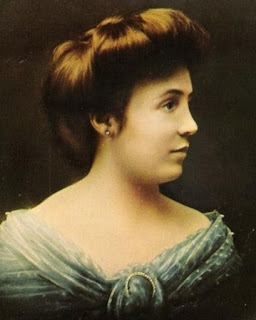‘Minor’ history’s big impact: Lena’s success story
History has always been a fascinating topic for me. I’ve been interested in stories from the past since I was a wee lad, and not just the ones taught in school. What generations have been taught is the big picture, the key events like wars, revolutions, exploration and discovery, and key moments in the country's evolution and the world. It’s an approach that overlooks the small stories, individual achievements that changed culture and society, history’s footnotes.
Many are things people may not think of as history simply because they’re not big events, even though they may have a longer lasting impact for us. While The History Channel focuses more on aliens, cryptozoology, and junk collecting, it does occasionally feature programs about non-conventional history subjects. Its “Changed America” documentary series has featured food, toys, businesses, and automobiles that changed America, the stories focusing on the people behind the scenes.In that vein, I enjoy sharing such stories here that I’ve come across, stories about overlooked individuals and their achievements. Just because you didn’t learn about them in history class doesn’t mean their achievements weren’t important. This is one of my occasional columns about little-known or overlooked achievers.
In 1895, a teenage Jewish orphan arrived alone in New York City. Lena Himmelstein, a seamstress, came from Lithuania in search of a new life. Can you imagine traveling halfway around the world by yourself to live in a strange country? Lena was talented at sewing dresses and quickly found work. She also found love with a boy named David, a Russian Jewish immigrant. They married and had a son named Raphael.
A month after Raphael was born, David unexpectedly died. As a widowed mother, Lena sometimes held Raphael on her lap as she sewed, often late into the night. She was successful with her sewing and in 1904 managed to get a bank loan to open her own seamstress shop. Lena designed one of the first maternity dresses in 1907, a time when pregnant women weren’t seen much in public. However, times were changing and more women were working outside their homes. They wanted comfortable clothes to wear while working during pregnancy. Lena’s design featured elastic waist maternity dresses for her customers. It was a hit.
In 1909, Lena married again. Her husband, Albert, took care of Lena’s business while she focused on design. They had two children, Helen and Theodore. In 1911, the New York Herald broke tradition with an ad for Lena’s maternity clothing. Her supply sold out the next day. Wanting to reach more potential customers, Lena’s was one of the first businesses to enter the mail-order catalog business. Featuring her designs for both regular and maternity clothes, Lena’s catalog soon became one of the most popular in the country.
Looking for a new market, Lena began designing stylish plus-sized clothes for women and changed the fashion landscape. She and Albert opened their first catalog store in Chicago in 1915. Along with her fashion innovations, Lena proved innovative in her business practices as well. She provided employee benefits for her workers, something uncommon for the time. Her employees had health insurance, life insurance, disability benefits, pensions, and profit sharing.
Through the years, Lena opened more stores around the country. After World War II, her stores became dropoff points and distribution centers for the needy in Europe, among them Holocaust survivors living in displaced persons camps. In addition, Lena insisted her company replace the wardrobe of any customer who lost their belongings in a natural disaster. She also supported and promoted American Jewish causes, including the Hebrew Immigrant Aid Society and the New York Federation of Jewish Philanthropies.
In 1951, at 71, Lena died. Her children continued and expanded her company, offering stylish fashion for all women. From humble beginnings and thanks to her faith, values, determination, and fashion sense, Lena’s is a true immigrant’s success story and her business continues to thrive today. Its name?
Well, when Lena got that loan in 1904 to open her shop, the bank misspelled her name on the loan papers. Lena Himmelstein didn’t correct it and kept the misspelling along with her first husband’s name as her business name - Lane Bryant.


Comments
Post a Comment